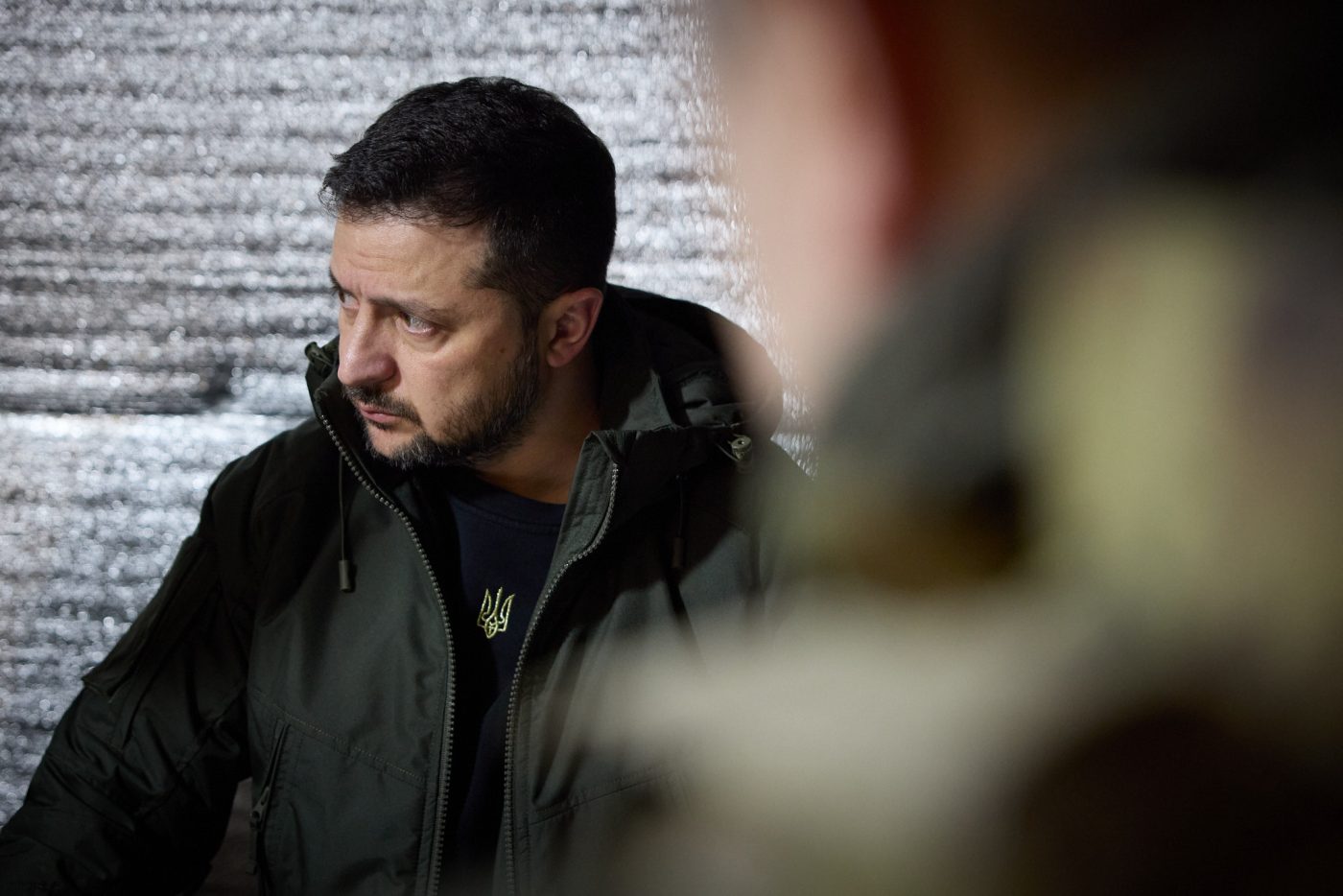Mobilization has become a hot potato tossed between the government and the military. In December, President Volodymyr Zelenskyy said commanders had asked for up to 500,000 extra people — a “very serious number” — and that he wanted more information.
The need for more manpower risks further destabilizing the economy and increasing tensions in society. There are no popular options for lawmakers in Kyiv.
The president also questioned where Ukraine would get the money to pay for the mobilization of half a million soldiers after General Valeriy Zaluzhnyi said the number had been established by accounting for ongoing battle plans and projected troop losses.
What is clear is that Ukraine has no choice but to mobilize more people. The men and women who have been fighting in intensive combat for 23 months are suffering serious fatigue and heavy losses. Ukraine does not detail its casualties, but US estimates in August suggested the total may be close to 200,000, including about 70,000 dead. The current strength of the ground forces is estimated at around 900,000.
The existing draft system hasn’t effectively mobilized the quantity or quality of soldiers needed. Many are men in their 40s from the countryside with health issues. While men aged 18 to 60 are barred from leaving the country, voluntary recruits are only supplemented by limited call-ups.
The dispute over mobilization is happening at a time when most authorized US military aid is close to exhausted and Congress has yet to pass a new aid package.
Russia’s casualties are much more severe, but its population is much bigger. Zaluzhnyi at first believed such massive losses would halt the Russian war machine, but said he failed to anticipate that Putin’s frame of reference for causalities would be World War I and II, in which millions died.
Ukraine has had to pause many of its military operations due to weapons shortages and the situation at the front looks tough. For now, at least, fighting is largely attritional, which favors Russia. There is however no sign that Ukraine will end its resistance.
That being so, the issue of increasing manpower (it is mainly men, although 60,000 women serve including 5,000 on the frontline) is urgent and must be decided. While Ukrainians continue to join the military, the numbers have been decreasing the longer the war goes on.
The failure to rotate troops who have been fighting for almost two years without a deadline has been off-putting for potential recruits. That’s something that the new mobilization wave will aim to solve.
The first draft mobilization law sent to parliament was withdrawn on January 11 as there was strong pushback from both the public and politicians. Defense Minister Rustem Umerov said shortly afterward that an updated version from the defense ministry was ready for the government to approve, adding that “we need it as soon as possible.”
The bill took six months to draft and included consultations with each of the main parties. It was submitted on December 25 under the names of the prime minister and defense minister, but not Zelenskyy, perhaps to protect his popularity.
Proposed measures included lowering the conscription age to 25 from 27 and legalizing digital draft notices. Non-compliance could lead to suspension from state benefits and services, as well as restrictions on transactions such as buying or selling property or getting a driver’s license.
Parliament’s Anti-Corruption Policy Committee also raised concerns about corruption risks in the proposed bill, although the specifics were not revealed. Some deputies warned that the plan wasn’t properly thought through and would lead to human rights violations.
There is also an economic risk. More than a fifth of Ukraine’s GDP is already going to support the military, and the proposed extension to mobilization would mean almost one-in-10 working-age men would be drafted.
Zelenskyy pointed out that taxpaying civilians are vital to the war effort, and six are needed to support each soldier. “If you are in Ukraine and you are not at the front, but you work and pay taxes, you also defend the state,” the president said during a visit to Estonia on the day the proposed draft law was withdrawn. “This is very necessary.”
The government must balance the needs of the army, the economy, and its budget while ensuring it doesn’t disincentivize companies and employees from working and paying taxes. Spending constraints already mean offering improved pay or other financial incentives to encourage more people to fight isn’t an option.
The emphasis on balancing economic interests also risks deepening inequality, especially if rich people who pay taxes are able to avoid going to the frontline and poorer members of society are called up.
The BBC recently reported that at least 20,000 young men had draft dodged by leaving for other countries. There have also been corruption scandals over payments to avoid the call-up.
There is also some war-weariness among the population at large after the summer’s sluggish counter-offensive. Umerov said in December he wants to mobilize Ukrainians living abroad. Zelenskyy did not give a direct answer when asked if Estonia should extradite Ukrainian men of mobilization age living there.
The demands of the military will need to be delicately weighed against the state’s financial and economic constraints and necessities. And against the willingness of ordinary Ukrainians to make further sacrifices to those they have already made.
Swinging too far in one direction could polarize society even more. Only tough choices lie ahead for Ukraine’s leadership.
David Kirichenko is a freelance journalist covering Eastern Europe. He can be found on Twitter/X @DVKirichenko.
Europe’s Edge is CEPA’s online journal covering critical topics on the foreign policy docket across Europe and North America. All opinions are those of the author and do not necessarily represent the position or views of the institutions they represent or the Center for European Policy Analysis.





